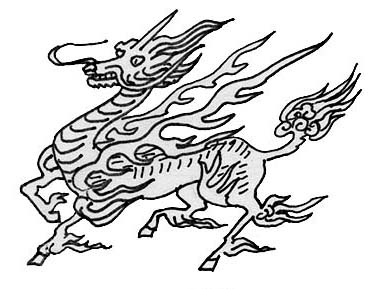|
||
 |
||

(C)2001 Japanese Architecture and Art Net Users System. No reproduction or republication without written permission.
掲載のテキスト・写真・イラストなど、全てのコンテンツの無断複製・転載を禁じます。
|
||||||
| kirin 麒麟 | ||||||
| KEY WORD : art history / paintings | ||||||
| Ch: qilin. A mythical Chinese animal that combines the elemental male animal ki 麒 (Ch:qi) and the female rin 麟 (Ch:lin). According to the Shijing (Jp: SHIKYOU 詩経) or Book of Songs, the kirin's hoofs, legs and horn, which resemble those of a deer, are symbols of benevolence. According to the Shuwenjiezi (Jp: SETSUBUNKAIJI 説文解字), the kirin has the body of a deer and the tail of an ox. Its distinctive single horn perhaps is related to the unicorn in western tradition. The kirin typically has five-colored hair but is yellow underneath. A paragon of virtue, the kirin supposedly appears in times of good government. According to legend, the animal appeared before Confucious (Jp: *Koushi 孔子, 551-479 BC) as well as Emperor Wu 武 of the Han dynasty. The kirin was painted, along with the dragon *ryuu 龍 and phoenix *houou 鳳凰, on the walls of some Han dynasty tombs. In Japan few early depictions are known to exist, except for its appearance in one segment of the second scroll of The Frolicking Animals, Choujuu jinbutsu giga 鳥獣人物戯画, otsukan 乙巻 (mid-12c), Kouzanji 高山寺 in Kyoto. In the Edo period, the kirin was sometimes painted by sinophile Kanou school *Kanouha 狩野派 artists. The term kirin meaning giraffe in modern Japanese should not be confused with this older usage. | ||||||
 |
||||||
| REFERENCES: | ||||||
| EXTERNAL LINKS: | ||||||
| NOTES: | ||||||
(C)2001 Japanese Architecture and Art Net Users System. No reproduction or republication without written permission. 掲載のテキスト・写真・イラストなど、全てのコンテンツの無断複製・転載を禁じます。 |
||||||